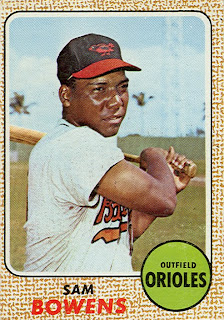Phil Ortega was signed by the Dodgers in 1959, and spent most of the next 5 seasons (1959-63) in their farm system. He made a few brief appearances with the Dodgers in '60, '61, and '63, and spent most of 1962 in the Dodgers' bullpen.
After spending most of 1963 in the minors, Ortega joined the Dodgers' starting rotation in 1964, making more starts (25) than any pitcher not named Koufax or Drysdale.
Following the 1964 season, Phil was traded to the Senators (along with outfielder Frank Howard, third baseman Ken McMullen, pitcher Pete Richert, and first baseman Dick Nen) for pitcher Claude Osteen, infielder John Kennedy, and $100,000. (Frank Howard and 4 others sounds like a lot to give up, but Osteen won 147 games for the Dodgers over the next 9 seasons.)
.jpg)
.jpg)
In Washington, Ortega was a member of the starting rotation for the next 3 to 4 seasons, and led the staff in starts and innings pitched in 1967. In 1968, he became a swingman, starting only about half of his appearances, and posted a 5-12 record.
In early April 1969, Phil was sold to the Angels, but his time there was short. After his last major-league game on May 4th, Ortega spent the remainder of 1969 and all of 1970 with the Angels' triple-A team in Hawaii. His final baseball card was in the 1969 set.
.jpg)
.jpg)
.jpg)
.jpg)
.jpg)
.jpg)
.jpg)
.jpg)
.jpg)
.jpg)
.jpg)
.jpg)
.jpg)
.jpg)